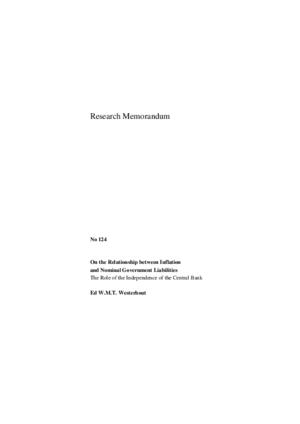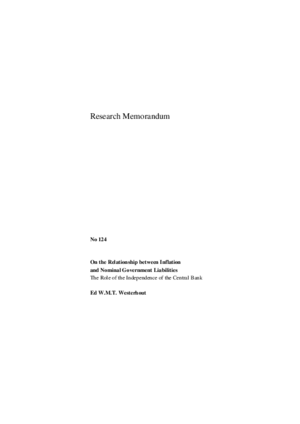On the relationship between inflation and nominal government liabilities; the role of the independence of the Central Bank
It is well-known that discretionary monetary policies suffer from an inflation bias. In the absence of rules, monetary authorities are tempted to produce surprise inflation in order to reduce the real value of nominal government liabilities like debt and money. As rational economic agents will adjust their expectations accordingly, inflation will be higher than in the case of rules.
According to this theory of inflation, inflation is a positive function of nominal government bonds. Still, the theory may overlook an important aspect of reality. In particular, it takes the degree of central bank (CB) independence as given but in the real world the degree of CB independence varies across countries and over time. These differences may very well be related to differences in the stocks of government debt and money. Indeed, a rise in government indebtedness may very well lead society to vote for a more conservative central banker in order to combat its inflationary bias. This paper explores the implications for the relationship between inflation and nominal government liabilities when society chooses the degree of CB independence such that it maximizes its welfare. The paper finds that the degree of CB independence is a U-shaped function of nominal government debt and money. This particular shape reflects the interaction of a credibility effect and a flexibility effect. First, nominal liabilities reduce the central banker's credibility, making it attractive for society to invest in more conservative monetary policies. Second, nominal government liabilities increase the effectiveness of monetary stabilization policies, which also increases the attractiveness of investing in more flexible monetary policies. Since the former effect dominates for high levels of nominal liabilities and the latter for low levels of nominal liabilities, the relationship between the degree of CB independence and the stock of nominal government liabilities has the claimed U-shape.
As a consequence, the average inflation rate is a hump-shaped function of nominal liabilities. An increase in nominal public debt thus does not necessarily fuel inflation, but may give rise to lower inflation as it induces society to appoint a more conservative central banker. Empirical estimates for the OECD area suggest that the model with endogenous CB preferences outperforms the model in which CB preferences are exogenous. In particular, the model with endogenous CB preferences outperforms the latter model which predicts too much inflation for those countries with high levels of public debt.
Downloads
Authors


